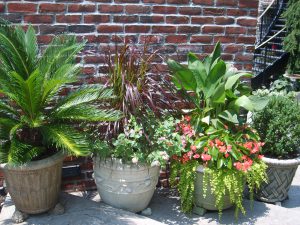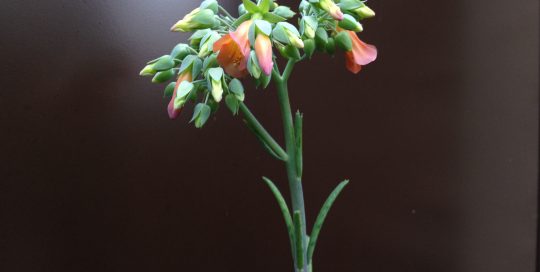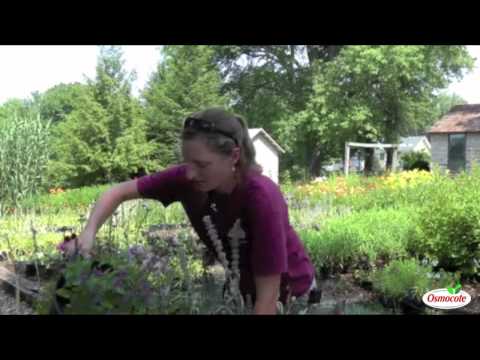What is Container Gardening?
Views: 4508

While telling a friend about my new blog opportunity, she posed the question, “What is container gardening?”
After explaining to her that container gardening in its broadest terms is any plant planted in anything other than the ground, I thought that explaining the basics of container gardening would be the perfect topic for my second blog post.
A container by definition is anything that can hold something. In gardening terms, a container could be a small pot to a raised bed and everything in between. When thinking about containers for your home, the endless options can be overwhelming. But, a little knowledge can make the decision making process a whole lot easier.
Container Gardening Drainage Holes Are a Must
The most crucial part of any container is drainage. My rule is, if a pot doesn’t have one or more drainage holes, don’t buy it. You can always drill a hole yourself. However, I find time and motivation limiting factors. I tend to then take the easy route and buy containers that come with holes. Another option for containers without drainage holes is to add a few inches of potting soil, gravel, or even packing peanuts to the bottom and place a plant in a smaller plastic pot inside the non-draining pot. (The plastic pot is hidden by the bigger container.) This is a good option for interior plants if you don’t want to use a tray under the container.
Protecting Surfaces
Another important consideration with containers is protecting the surfaces underneath them. Many pots are sold with coordinating saucers to contain water overflows, this is especially important for interior plants. In addition to the saucer, I also use cork mats under my indoor containers to prevent staining. Plastic saucers, while not as aesthetically pleasing, work just as well. Plus, they come in many sizes, and are easy to find at most nurseries and hardware stores. For a fun look, try placing colorful dinner plates under your indoor containers (probably best for pots no bigger than 8-10”). Local resale shops and discount stores are great places to find a funky assortment of plates.
Protecting outdoor surfaces is important, too. Containers will leave discolored rings on most outdoor surfaces if they’re not elevated slightly to allow air flow. My deck containers are elevated with a product called Pot Toes™. These discreet plastic “toes” are easy to slide under any size pot and are very affordable. There are also plenty of terra cotta, stone, and concrete versions to choose from, however the options at local stores tend to be limited. You could also use level rocks or bricks to elevate your containers, a potentially free option if you can find some lying around.
Container Gardening Styles
When choosing the style of container, just go with what you’re drawn to. Think of colors that would complement your existing décor (interior and/or exterior). You can’t go wrong with multiple containers if you stick with a similar color scheme (think hot colors, cool colors, earth tones, etc.). Terra cotta and concrete tend to look more classic and formal, while colorful pots add a sense of fun. For a modern look, use containers with straight lines. If you really feel like getting creative, look around your house or at yard sales for any objects that can hold dirt. Lately I’ve seen everything, from old grills and toolboxes to gutters and stacked tires, re-used as containers. Remember to make a drainage hole in any objects that hold water!
Lastly, consider the weight of the container, especially if you plan on moving it. For large containers, choosing a light weight material like plastic, fiberglass, poly resin, or another composite material will really save your back later. Use something to take up space in the bottom of a large container to reduce weight and the amount of potting soil needed. The easiest option is to turn a plastic nursery pot upside down in the bottom of the large container and fill in with soil around it. You can also use a few inches of packing peanuts in the bottom, but these can get messy later when you’re trying to change out that container. Consider yourself warned.
Well, that pretty much sums it up for now. With few considerations, anyone can put together a nice grouping of containers, indoors and out. Lastly, I’ll leave you with one more piece of advice, when in doubt, terra cotta goes with everything.
Meet Abbi Hayes
Abbi's Recent Posts

Kalanchoe delagoensis: Mother of Millions







